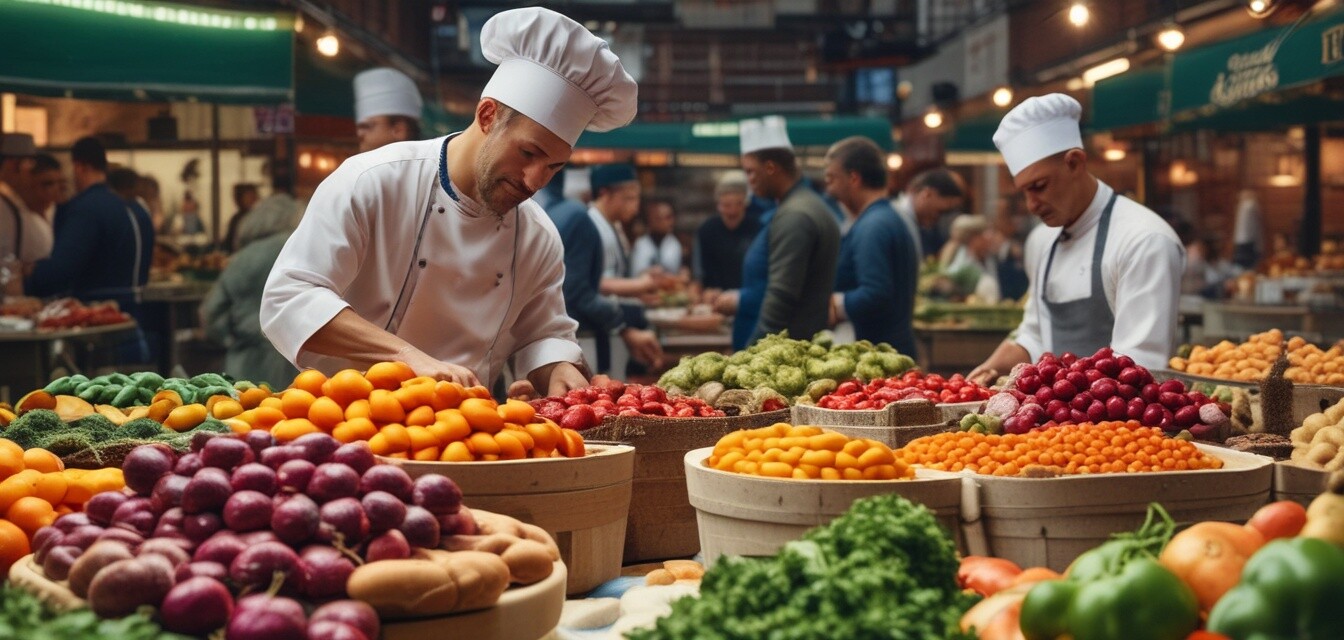
The Influence of Culinary Education on NYC's Food Scene
Key Takeaways
- Culinary education plays a vital role in shaping the food culture of New York City.
- Chefs trained in prestigious culinary schools drive innovative cooking techniques.
- Local ingredients and sustainability practices are emphasized in culinary curricula.
- Culinary students contribute to NYC’s diverse dining options through experimentation.
- Culinary trends evolve with the education and practices adopted by local chefs.
New York City is renowned for its extraordinary food scene, and at the heart of many of its culinary innovations lies a rich and diverse history of culinary education. Institutions across the city nurture aspiring chefs, instilling knowledge about cooking techniques, flavor combinations, and sourcing quality ingredients. This article will delve into how culinary education influences NYC's food scene and the trends shaping the dining experiences we know and love today.
The evolution of culinary education in NYC
Culinary education has undergone significant changes over the years in NYC, moving from traditional apprenticeships to formal classroom settings. The city is home to several prestigious culinary schools that equip students with the skills they need. Here's a brief overview in the table below:
| Year | Education System | Key Developments |
|---|---|---|
| 1930s | Apprenticeships | Hands-on training under master chefs |
| 1960s | Culinary Schools | Emergence of formal culinary programs |
| 2000s | Modern Techniques | Focus on molecular gastronomy and New American cuisine |
| 2020s | Sustainability | Integration of plant-based cooking and local sourcing |
Key culinary schools shaping NYC
Several renowned culinary schools actively shape the future of New York's food scene through their innovative curricula. Students are learning much more than just cooking – they are being educated on business practices, nutrition, and sustainability. Some of the most notable institutions include:
- Culinary Institute of America
- Institute of Culinary Education
- New York Restaurant School
- Johnson & Wales University
Training the next generation of chefs
In these culinary schools, students are trained not only in culinary arts but also in the application of creativity and critical thinking in the kitchen. This training empowers a new generation of chefs who are pushing the boundaries of modern cuisine. Furthermore, they participate in internships at prestigious restaurants, gaining invaluable real-world experience.
The impact of culinary education on NYC's food trends
As students graduate from culinary programs and enter the workforce, their newfound skills have a direct influence on food trends. Some key areas of impact include:
Pros
- Encouragement of innovative cooking techniques.
- Promoting local ingredients, which supports community farmers.
- Increased awareness of food sustainability practices.
- Contribution to a diverse and dynamic food culture.
Cons
- Higher entry barriers for aspiring chefs due to educational costs.
- Potential homogenization of styles as trends become popularized.
- Pressure on chefs to constantly innovate could lead to burnout.
New trends influenced by culinary education
Culinary education has paved the way for new trends in the NYC food scene, including:
- Plant-based diets and vegan cuisine
- Global cuisines merging with local flavors
- Farm-to-table dining establishments
- Experimental cooking techniques such as sous-vide and fermentation
Culinary collaborations and their impact on the scene
As culinary students collaborate with established chefs, they serve to broaden the horizon of what is possible in food preparation and presentation. These partnerships often lead to innovative dining concepts that grab attention and spotlight emerging chefs. A few examples of collaboration formats are:
| Collaboration Type | Description | Example |
|---|---|---|
| Pop-Up Restaurants | Temporary venues allowing chefs to test recipes | Chef’s Night Out in Brooklyn |
| Food Events | Collaborating on unique dish presentations | Smorgasburg Food Festival |
| Workshops | Hands-on training for the public taught by chefs and students | Cooking classes at local community centers |
Conclusion
Culinary education remains a powerful influence on NYC's food scene, nurturing fresh talent and innovative practices that shape the dining landscape. It serves as a bridge linking tradition with modernity, inspiring chefs and food enthusiasts alike. By understanding the role of culinary education, we can appreciate the depth of creativity and skill that promotes a thriving culinary environment in New York City.
Explore more culinary content
To stay updated on the latest culinary news and trends, don't miss out on our related articles: